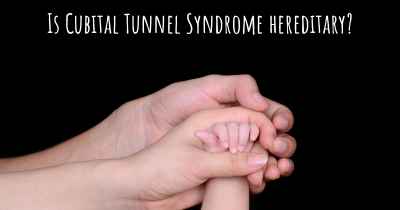Living with Cubital Tunnel Syndrome. How to live with Cubital Tunnel Syndrome?
Can you be happy living with Cubital Tunnel Syndrome? What do you have to do to be happy with Cubital Tunnel Syndrome? Living with Cubital Tunnel Syndrome can be difficult, but you have to fight to try to be happy. Have a look at things that other people have done to be happy with Cubital Tunnel Syndrome

Living with Cubital Tunnel Syndrome
Cubital Tunnel Syndrome is a condition that affects the ulnar nerve, which runs along the inner side of the elbow. It occurs when this nerve becomes compressed or irritated, leading to pain, numbness, and weakness in the hand and arm. Living with Cubital Tunnel Syndrome can be challenging, but with proper management and lifestyle adjustments, you can minimize its impact on your daily life.
1. Seek Medical Advice
If you suspect you have Cubital Tunnel Syndrome or are experiencing symptoms, it is crucial to consult a healthcare professional. They can diagnose your condition, provide appropriate treatment options, and offer guidance on managing the symptoms effectively.
2. Rest and Protect the Affected Arm
Resting the affected arm is essential to allow the nerve to heal. Avoid activities that aggravate the symptoms, such as repetitive motions or prolonged bending of the elbow. Additionally, protecting the arm with a splint or brace can help prevent further irritation and promote healing.
3. Modify Your Workstation
If your job involves repetitive arm movements or prolonged elbow flexion, it is crucial to modify your workstation to reduce strain on the ulnar nerve. Ensure your chair, desk, and computer are ergonomically positioned to promote proper posture and minimize pressure on the affected arm.
4. Practice Good Posture
Maintaining good posture is essential for individuals with Cubital Tunnel Syndrome. Avoid slouching or leaning on your elbows, as this can increase pressure on the ulnar nerve. Instead, sit and stand with your shoulders back and your spine aligned.
5. Avoid Excessive Pressure on the Elbow
Putting excessive pressure on the elbow can worsen Cubital Tunnel Syndrome symptoms. Avoid leaning on hard surfaces or resting your elbow on the armrest of chairs for extended periods. Using a cushion or pillow to support your arm can help alleviate pressure.
6. Use Ergonomic Tools
Using ergonomic tools and equipment can significantly reduce strain on your arm and elbow. Consider using an ergonomic keyboard, mouse, or other devices that promote a neutral wrist and arm position. These tools can help minimize repetitive movements and decrease the risk of exacerbating symptoms.
7. Apply Cold or Heat Therapy
Cold therapy can help reduce inflammation and numbness, while heat therapy can alleviate muscle tension and promote blood circulation. Applying a cold pack or warm compress to the affected area for 15-20 minutes several times a day can provide relief.
8. Engage in Gentle Exercises
Engaging in gentle exercises can help maintain flexibility and strength in the affected arm without exacerbating symptoms. Consult with a physical therapist or healthcare professional to develop a customized exercise program that focuses on stretching and strengthening the muscles surrounding the elbow.
9. Manage Pain and Inflammation
If you experience pain or inflammation, over-the-counter nonsteroidal anti-inflammatory drugs (NSAIDs) can provide temporary relief. However, it is important to consult with your healthcare professional before taking any medication to ensure it is safe and suitable for you.
10. Consider Physical Therapy
Physical therapy can be highly beneficial for individuals with Cubital Tunnel Syndrome. A physical therapist can provide specialized treatments, such as ultrasound therapy, nerve gliding exercises, and manual therapy techniques, to alleviate symptoms and improve overall function.
11. Explore Alternative Therapies
Some individuals find relief from Cubital Tunnel Syndrome symptoms through alternative therapies such as acupuncture, chiropractic care, or massage therapy. While the effectiveness of these therapies may vary, it is worth exploring them under the guidance of a qualified practitioner.
12. Practice Stress Management
Stress can exacerbate pain and discomfort associated with Cubital Tunnel Syndrome. Engaging in stress management techniques such as deep breathing exercises, meditation, or yoga can help reduce stress levels and promote overall well-being.
Living with Cubital Tunnel Syndrome requires patience, self-care, and a proactive approach to managing symptoms. By implementing these strategies and working closely with healthcare professionals, you can improve your quality of life and minimize the impact of this condition on your daily activities.








